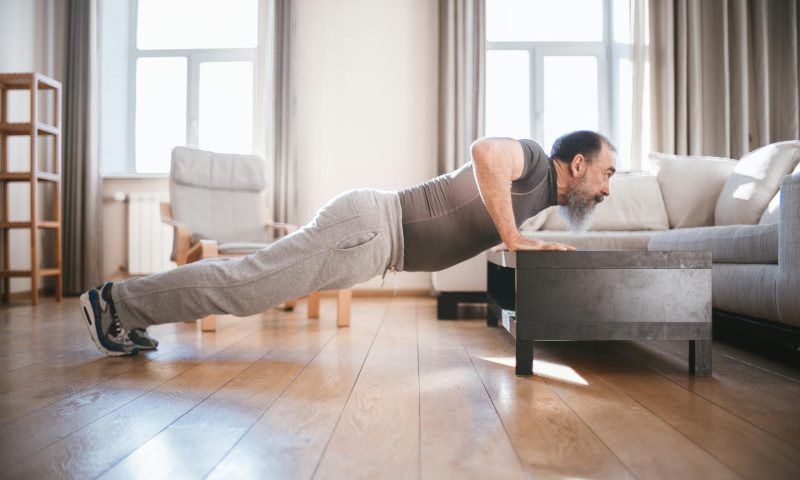Most people breathe wrong during workouts — and it’s quietly killing their performance, says fitness expert Andrea Marcellus. Marcellus, a Los Angeles-based fitness expert and life strategist for over 30 years, first became interested in breathwork during workouts after a personal experience. Today, Andrea Marcellus is the Founder and CEO of AND/lifeTM, a life-maximization brand with a mission to help busy people prioritize their physical and mental wellbeing with minimal effort and sacrifice.
After personally experiencing the benefits of breath work, she began studying it more intentionally, inspired by the impact breathing can have on performance, hormones, and metabolism. Based on her experience, she shared her best science-backed breathing techniques that can instantly help you improve your form, power, and recovery — without changing your routine.
Deep diaphragmatic breathing

One technique that can transform your workouts is deep diaphragmatic breathing, a method that allows you to engage your diaphragm to take full, belly-expanding breaths as opposed to shallow chest breaths. Most of us unconsciously take shallow breaths, which can limit the amount of oxygen we can get and therefore impact energy.
“The deeper the breath, the more oxygen can flow around the system. The more oxygen, the better our body will perform in general. But it’s deeper than that. If you breathe in through the nose and out through the mouth, that will stimulate your vagus nerve, which activates your parasympathetic nervous system. This allows the body to drop into a rest and digest mode, essentially dialing down the stress response in the body,” Marcellus shares. In turn, this process allows for emotional release and a reduction in cortisol and adrenaline. Cortisol promotes fat storage, which often gets in the way of fitness and well-being goals.
Benefits of proper breathing
During exercise, Marcellus says using proper breathing techniques allows individuals to perform better in both strength and stamina. “But the most exciting thing to watch [in my clients] is them change emotionally over time as their stress response improves. Exercising with intentional breathing is essentially another form of therapy. Breathwork trains the brain to stop overresponding to stress. Intentional breathing during exercise can help make the brain more resilient to challenging circumstances in life.” Learning to breathe properly during your workout can also reduce the risk of injury through core stabilization, lower your stress levels, and boost mental focus.
Nasal breathing

In contrast, nasal breathing helps to increase nitric oxide in the body, expanding blood vessels and improving oxygen delivery to your muscles. “This can enhance your stamina and improve the use of glucose. Additionally, nasal breathing slightly increases CO2 levels in the blood, which helps oxygen be released more efficiently to the tissues. This will help with endurance as well as fat oxidation because that requires more oxygen to be metabolized than glucose (carbohydrates) do.” Inhaling through the nose and exhaling through the mouth also preserves hydration in colder and drier conditions, as there is less water loss compared to mouth breathing.
Applying breathing techniques during exercise

During a workout, Marcellus says it’s best to focus on exhaling on exertion to boost core stability and power output. For example, when performing a squat, inhale on the way down and then exhale on the way up. For push-ups, you’ll also inhale on the way down and exhale on the way up. For weightlifting exercises, she recommends exhaling on the exertion.
For a squat, it would be to inhale on the down and exhale on the up. For push-ups, same thing, inhale on the down, exhale on the up, for weightlifting. It’s always exhale on the exertion. “Interestingly, pilates breathing is the opposite. The inhale is on the exertion, and the exhale is on the eccentric contraction as the muscle slowly releases against gravity.”
During any type of exercise, she also recommends maintaining a consistent breathing rhythm and avoiding breath-holding, which can cause a spike in blood pressure and can cause dizziness. Instead, focus on matching your breath to the movement. Also, consider the intensity of your workout. For cardio exercises like running or cycling, use a rhythmic breathing pattern — for example, inhale for 3 steps, exhale for 2.
Tips to get started
When you start breathing correctly during exercise, Marcellus says the results are immediately noticable. “Most people feel the difference immediately in their workouts. And over time, they will notice that they are less responsive to triggering circumstances in life. It’s an absolute joy to watch people’s lives improve in ways that go far beyond weight, loss, and muscle development because intentional breath work during exercise helps to develop their brain and positive ways simultaneously.”
You don’t have to overhaul your entire fitness routine to start using these techniques, either. “Choose nasal breathing from time to time, making sure to keep the jaw relaxed, and the tongue off the roof of the mouth when possible during daily activities that are lower intensity, like walking. For exercise of any moderate to high level of intensity, breathing in through the nose and out through the mouth generally will feel the most comfortable because it allows for the most oxygen intake.”




